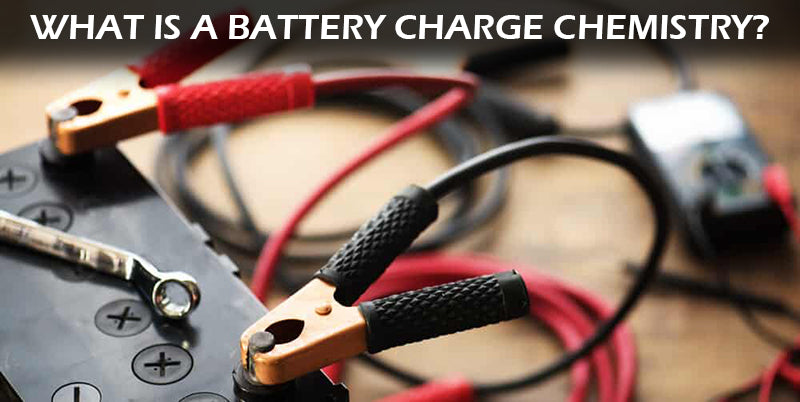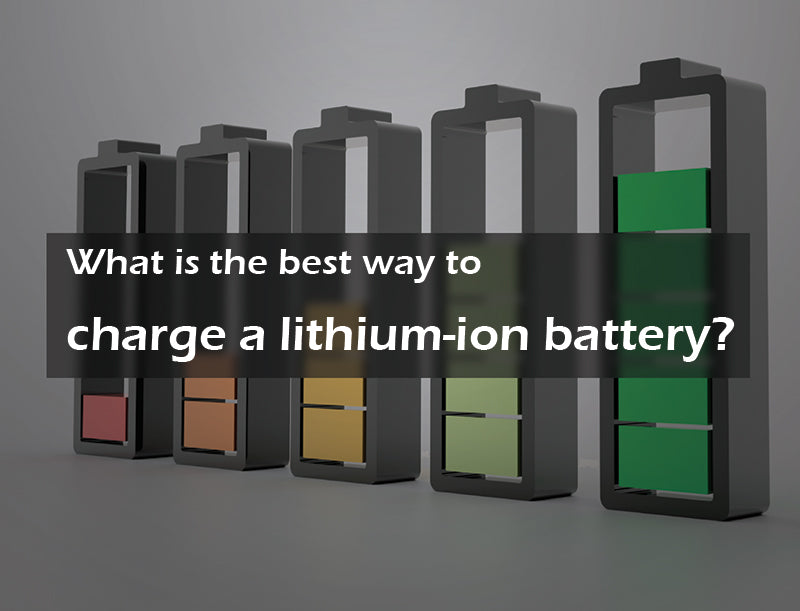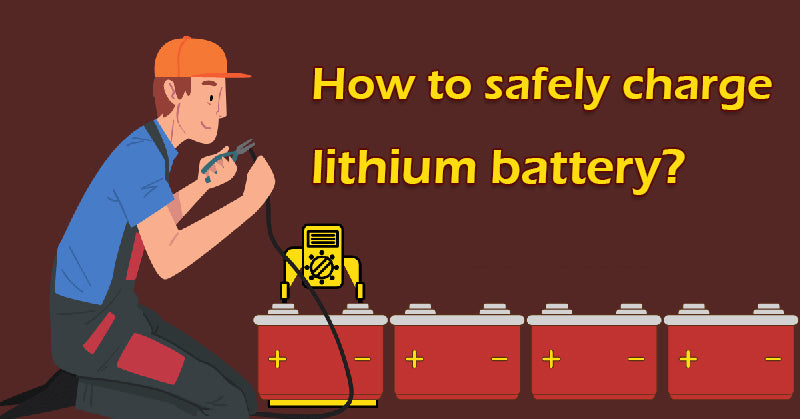
Main content:
- What is a battery charge chemistry?
- What cause a battery to lose charge?
- What is a battery charge method?
- How do I know when my battery is fully charged?
- What is the best way to charge a lithium-ion battery?
- Can a lead acid battery charger charge lithium battery? Do I need a special charger for lithium-ion batteries?
- How to charge batteries without charger?
- What voltage required to charge lithium-ion battery?
- How often should I charge lithium-ion batteries?
- How to safely charge lithium battery?
- Conclusion
1. What is a battery charge chemistry?
Before explaining what is a battery charge chemistry, let us understand battery chemistry. A battery, irrespective of its shape and chemical composition, is a storage house of chemical energy. The energy gets released by chemical action within the cell if connected to an external device that consumes power. The stored energy is electrochemistry; hence battery is known as an electrochemical cell. The battery will have two electrodes, anode and cathode. Apart from anode and cathode, it will also have a chemical conductor, either in aqua or solid form, known as the electrolyte.
Battery charge chemistry:
Batteries can be rechargeable and non-rechargeable. Non-rechargeable batteries will have electron movement only in one direction, i.e., from anode to cathode. Their reaction stops at cathode, and it becomes dead there. Once the entire electrode moves to cathode, the battery becomes completely flat. What is a battery charge? In rechargeable batteries, the ions will move back during battery charge if it has a electrolyte. During the process, the entire ions will return to the anode and be ready to use again. The ions will start moving back to anode during charging process.

During charging process, a reverse chemical action will happen. As a result, the positive ions released from the anode will be released to the electrolyte. Simultaneously the electrons from the cathode will travel back to the anode. The final result of the chemical action is that cathode ions and anode and cathode electrons will be stored in anode and ready with electric power. The chemical process of discharging is known as oxidation. In the process, anode release electrons with cathode ions to cathode part of the battery. The cathode receives the cathode ions and generates anode ions. The separator will not let anode ions flow back so that the electrons will move to the external circuit.
2. What cause a battery to lose charge?
During a power discharge, either electricity power consumption or self-discharge, the electrons move from anode to cathode through the electrolyte. The discharge will happen due to the movement of anode to the cathode. Suppose it has a power consumption. In that case, the movement of electrons will be faster, and all ions will remain in cathode part of the battery. When charging occurs, the ions will move back to the anode. Unless an external electrical charger is used, the ions will stay there.
3. What is a battery charge method?
Most commonly, the battery is charged from the grid via a charger.The battery charger draws Alternating Current (AC) from the grid and converts it into Direct Current (DC), and is used to recharge the battery. Constant current, constant voltage, and constant voltage-constant current are the three methods of recharging. Please find below a brief description of the three methods to what is a battery charge.
● Constant voltage: In constant voltage, a charging mode in which the charging voltage is maintained at a constant value, it allows the full battery current of the charger to flow to the battery until the power supply touches the preset voltage. The current will settle to a minimum when the voltage reaches the preset value. You can continue recharging till the battery is ready to use. The battery will remain in float voltage, and trickle charging will compensate for the battery self-discharge. The voltage driver will take care of the voltage level and maintain the voltage at a constant level irrespective of the current variations.

● Constant current: The voltage will remain constant in a constant current, and it will not show any variation even if there are current variations. The output current in constant current mode is determined by the load. For example, in a power tool with 5V/0~5A, the voltage will remain constant at 5V, but the output current will vary from 0~5A subject to its load consumption. The current voltage will stay the same even if the load consumption varies.
● Constant voltage constant current (CCCV): The constant voltage constant current recharging is commonly used for lithium ion battery charging. It is a mixture of constant voltage and constant current charge methods. In this charging process, the charger will maintain the current at a preset value until the current recharge power reaches the preset voltage value. When the battery becomes full charge, the current gets reduced.
Taking a lithium battery in what is a battery charge as an example: the first stage of constant current and constant voltage charging (CCCV) charges the battery with constant current, and the battery voltage increases linearly with time in this stage. When the battery voltage reaches the preset upper limit (4.2V for ternary, 3.65V for lithium iron phosphate). Transfer to the second stage and then charge the battery with constant voltage at this upper limit voltage. In the constant voltage charging stage, the charging current gradually decreases with time until the current drops to less than 0.1C, at which time the charging is completed.
4. How do I know when my battery is fully charged?
Most new-gen charger devices will have an indicator to notify the charge status. The battery charge will blink to green or blue if it is complete. When it is required to be charged, it will flash red, and during the process of charging and once the charge is complete, the light will turn blue or green and some batteries have screens that can also be displayed. With the help of a voltmeter also, you can check the voltage of the battery. A 12v lithium iron phosphate battery, if the reading shows a voltage of 14.6, it indicates a full charge. If the voltage is less than 14.6, it requires recharging.
5. What is the best way to charge a lithium-ion battery?
● Shallow discharge: Shallow discharge gives an extended life for a lithium-ion battery. The best result you can achieve is by charging the battery not more than 80% and does not allow to discharge below 20%.

● Unplug from charger: Keep it a practice to unplug your device from the charger when the charge reaches 80%. In doing so, the battery will not get 100% charged. The new-generation lithium-ion battery comes with advanced BMS, which will control the battery overheating due to excessive charging.
● Recharge within the recommended temperature: You can charge the battery when the temperature is 0 to 45℃, and the most suitable temperature is between 20 and 25℃.
6. Can a lead acid battery charger charge lithium battery? Do I need a special charger for lithium-ion batteries?
A charger for a lead-acid battery cannot charge a lithium battery. Lithium battery charging requires a special lithium battery charger. Because the characteristics of lead-acid chargers and lithium chargers are different, lead-acid chargers have pulse charging inside, which can cause damage to lithium batteries. Similarly, chargers in what is a battery charge for other batteries cannot be used to charge lithium-ion batteries.
7. How to charge batteries without charger?
Using a live battery, you can recharge a battery without a charger. Suppose you want to recharge a 3.7V DC battery, then you need to use a battery with more than 3.7V DC. For this purpose, you can use 3 AA or AAA batteries and connect in series to get 4.5V. Then, using a metal wire, connect the negative side of the live battery with the dead battery's negative side and connect the dead battery's positive side with the live battery's positive side. It is the easiest way to charge a dead lithium-ion battery with a live battery. Also, lithium ion batteries can be charged with solar panels. It is worth noting that charging lithium-ion batteries using solar panels requires charging controllers, namely PWM and MPPT.
8. What voltage required to charge lithium-ion battery?
The absorption voltage will vary depending on the voltage of the battery. A 3.7V lithium-ion battery is required to charge with 4.2V. Similarly, a higher voltage battery will require higher absorption voltage. An 12V battery needs 14.6V, and a 24V battery requires 29.2V.
9. How often should I charge lithium-ion batteries?
Depending on the power consumption, you can charge the lithium-ion battery before the power reduces less than 20% of the capacity and will not let the charge cross beyond 80%. You can regularly charge a lithium-ion battery as and when required before the charge capacity reaches below 20%. Power-consuming devices may require frequent recharging depending on the energy consumption.
10. How to safely charge lithium battery?
The following are the simple method to charge a lithium-ion battery for what is a battery charge safely.

- Do not use a device while charging.
- Disconnect the load or turn off the device until the battery gets the required charge.
- Charge the device/battery at the proper temperature. Do not charge the battery at an extremely low or high temperature.
- Do not fully charge the battery. Keep the charging level to a maximum of 90%, and do not allow the charge to drop below 10%.
- Turn off the charger if the battery becomes too hot.
- Disconnect the battery from the charger once the charging is over.
- For getting extended battery life, make it a practice to do shallow charging.
- Use a special lithium battery charger for charging.
- Do not reverse charge the battery.
- Do not short-circuit the charging line.
11. Conclusion
The new generation lithium-ion batteries come with intelligent BMS, which will take control of the battery management. The system will protect the battery from overcharging and overheating. Lithium-ion batteries are the power source for motorcycle batteries, kayak battery and most electronic equipment and power tools. These batteries can offer the best performance if the battery is charged correctly by maintaining the best practices.
Related articles: battery self discharge, top 5 fast charge battery material companies in China
















